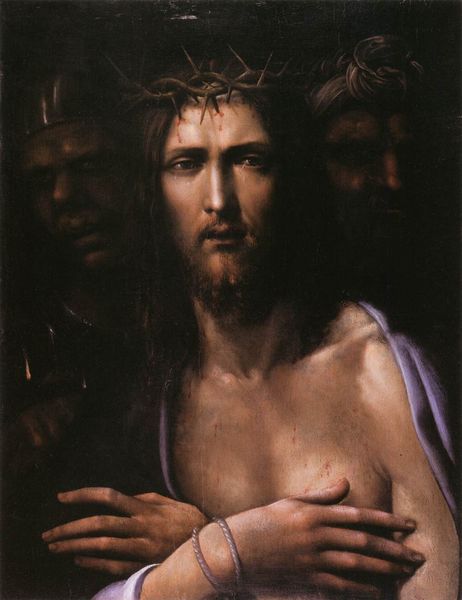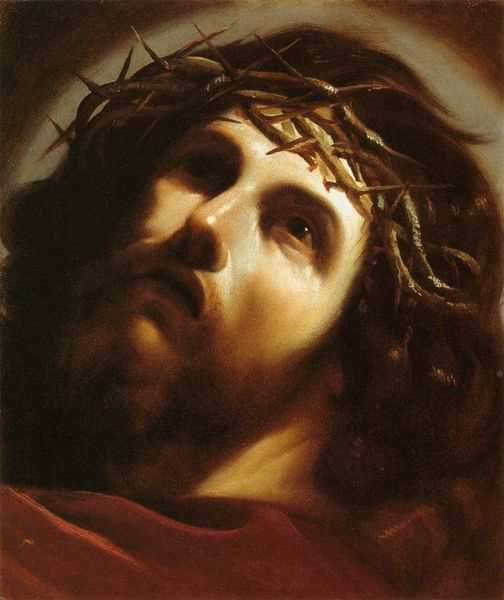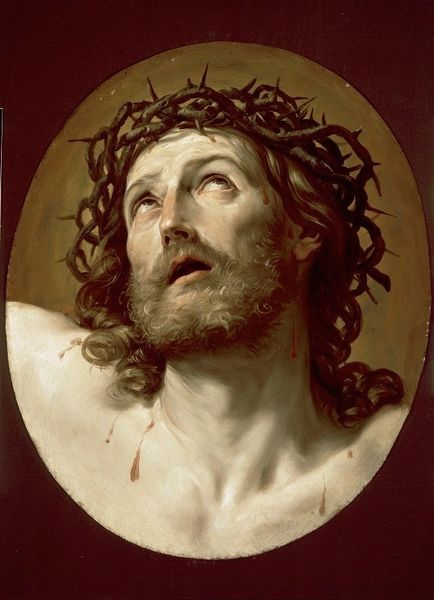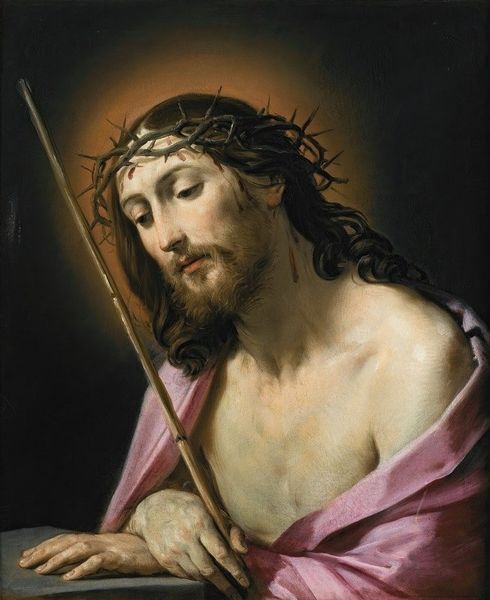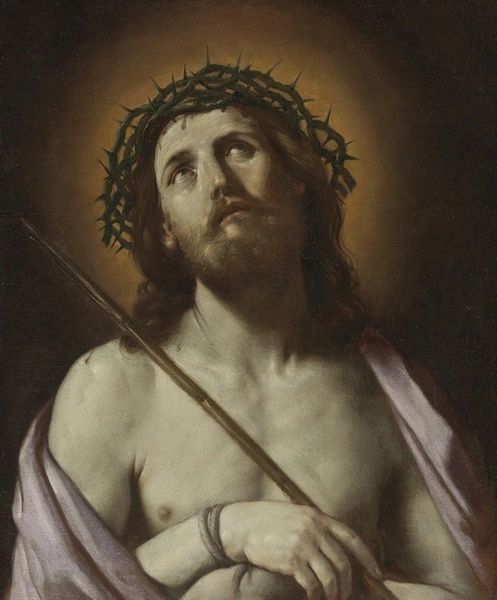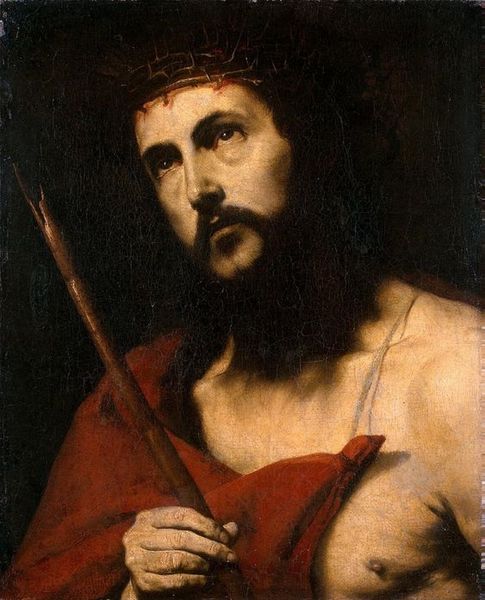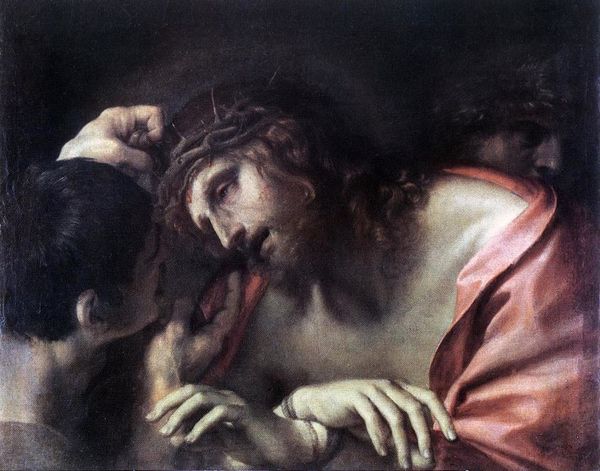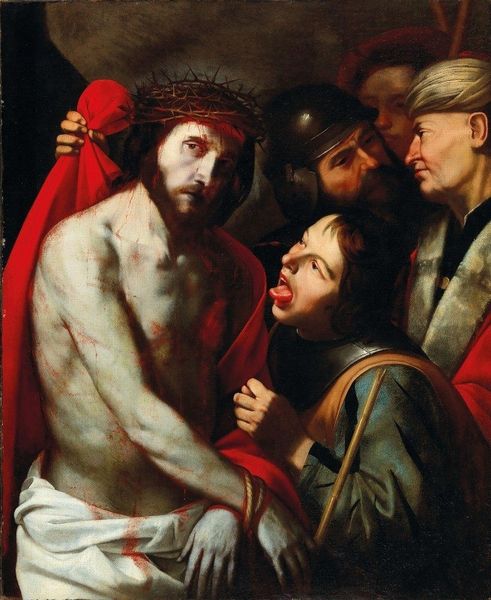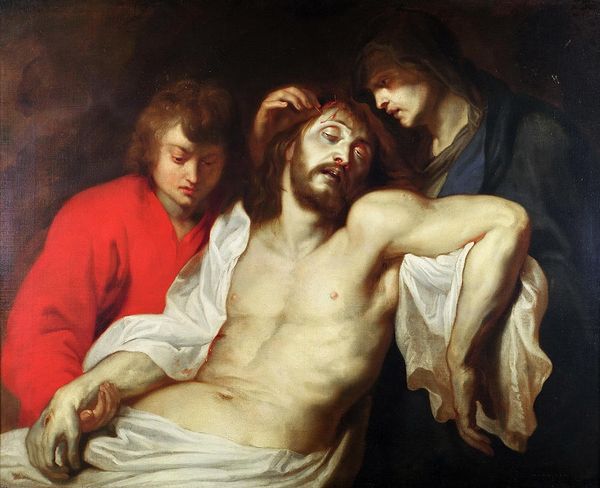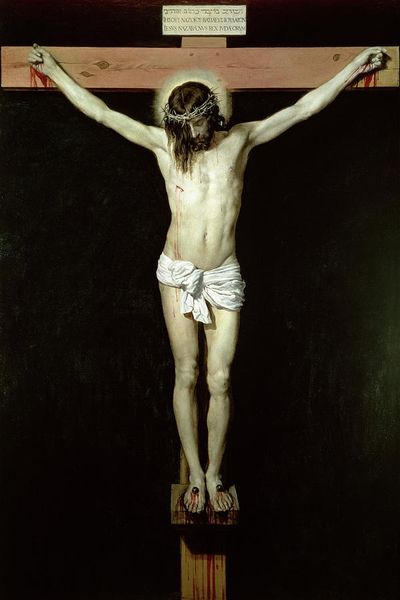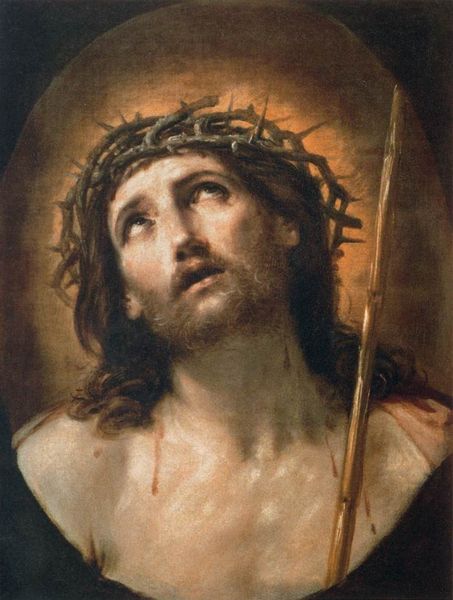
painting, oil-paint
#
portrait
#
baroque
#
painting
#
oil-paint
#
figuration
#
history-painting
#
academic-art
Copyright: Public Domain: Artvee
Curator: Here we have Carl Bloch's study in oil paint, "Christ with Mocking Soldier." Editor: It's stark. The dramatic light and dark contrast pulls you in, almost uncomfortably so. There's a real intensity in the faces. Curator: Precisely. The composition directs our gaze towards the central figure, Christ, but our attention is wrestled by the soldier's mocking sneer. Note Bloch's mastery in depicting fabric, the way the red cloak drapes across Christ's shoulders, and the metal of the soldier's helm—real showcase of texture. Editor: Absolutely, it’s a careful orchestration of materials. I'm thinking about what that red cloak really signifies here, practically, materially: likely dyed with madder root in that period. Think about the labor that went into creating and maintaining that garment, a sharp contrast with its forced, theatrical placement upon Christ. And consider the physical impact of the crown of thorns, each spike meticulously rendered. Curator: Bloch utilizes a baroque vocabulary of theatricality and dynamism, evident in the emotional tension and chiaroscuro. The broken staff held by the soldier becomes a symbol of powerlessness, highlighting the injustice of the scene. Editor: Injustice made tangible through those simple materials. The wood of that broken staff—easily splintered, a common tool of physical abuse—placed against Christ’s bound hands. Bloch forces us to confront not just the religious narrative, but the brute physicality of power. How the powerful, throughout history, have used crude, everyday things to wound and control. Curator: Bloch’s academic approach combines observation with an idealized form, softening the brutality somewhat, perhaps, to align with traditional aesthetics and the expectations of his audience. Editor: That attempt at idealization sits uncomfortably beside the harsh materials and labor represented. This makes the image so powerful to me. The very act of observing and depicting demands scrutiny of production. It moves beyond purely devotional into something much rawer and materially conscious. Curator: It offers, shall we say, differing layers of engagement depending on one’s perspective. A technically and emotionally arresting piece. Editor: Exactly, art’s power always comes back to confronting the conditions and labor embedded into everything. I'll be thinking about this one for a while.
Comments
No comments
Be the first to comment and join the conversation on the ultimate creative platform.
